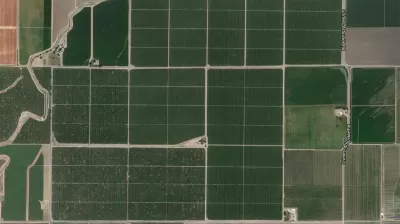Facebook expects to release its worldwide maps of human density in the coming months—potential applications will likely be somewhere on the spectrum between humanitarian and commercial.

James Vincent reports on Facebook's project to map the world's population density using artificial intelligence (AI), which the social media company launched in 2016.
Vincent's coverage follows a blog post from Facebook updating progress for the project.
As Facebook explains, creating maps like this is a challenging job for humans. Although we have high-resolution satellite imagery that covers pretty much every corner of the globe, turning this into useful information is a time-consuming process. To create population density maps, for example, humans have to label each building in the images, then cross-reference this with census data. This is particularly tricky in the African continent where census tracts can cover regions as large as 150,000 square miles but contain just 55,000 people.
Facebook is hacking the tedium of the project of mapping the world with the help of AI. "To automate this process, Facebook’s engineers used data from open-source mapping project Open Street Map to train a computer vision system that can recognize buildings in satellite imagery. They then used this to remove the vast majority of the satellite data that showed unoccupied land," according to Vincent.
Facebook's post emphasizes potential humanitarian applications for the mapping project. Vincent, however, suggests that the maps have obvious commercial applications as well.
FULL STORY: Facebook is using AI to map population density around the world

Alabama: Trump Terminates Settlements for Black Communities Harmed By Raw Sewage
Trump deemed the landmark civil rights agreement “illegal DEI and environmental justice policy.”

Planetizen Federal Action Tracker
A weekly monitor of how Trump’s orders and actions are impacting planners and planning in America.

The 120 Year Old Tiny Home Villages That Sheltered San Francisco’s Earthquake Refugees
More than a century ago, San Francisco mobilized to house thousands of residents displaced by the 1906 earthquake. Could their strategy offer a model for the present?

In Both Crashes and Crime, Public Transportation is Far Safer than Driving
Contrary to popular assumptions, public transportation has far lower crash and crime rates than automobile travel. For safer communities, improve and encourage transit travel.

Report: Zoning Reforms Should Complement Nashville’s Ambitious Transit Plan
Without reform, restrictive zoning codes will limit the impact of the city’s planned transit expansion and could exclude some of the residents who depend on transit the most.

Judge Orders Release of Frozen IRA, IIJA Funding
The decision is a victory for environmental groups who charged that freezing funds for critical infrastructure and disaster response programs caused “real and irreparable harm” to communities.
Urban Design for Planners 1: Software Tools
This six-course series explores essential urban design concepts using open source software and equips planners with the tools they need to participate fully in the urban design process.
Planning for Universal Design
Learn the tools for implementing Universal Design in planning regulations.
Clanton & Associates, Inc.
Jessamine County Fiscal Court
Institute for Housing and Urban Development Studies (IHS)
City of Grandview
Harvard GSD Executive Education
Toledo-Lucas County Plan Commissions
Salt Lake City
NYU Wagner Graduate School of Public Service




























